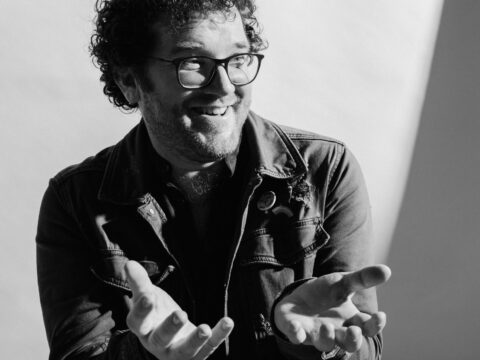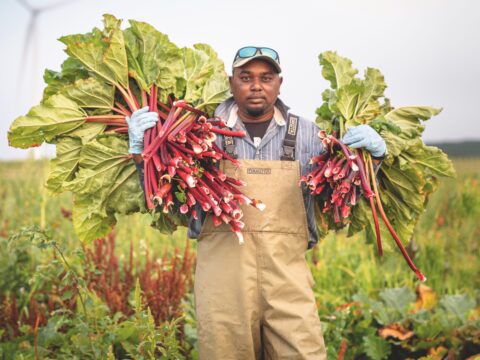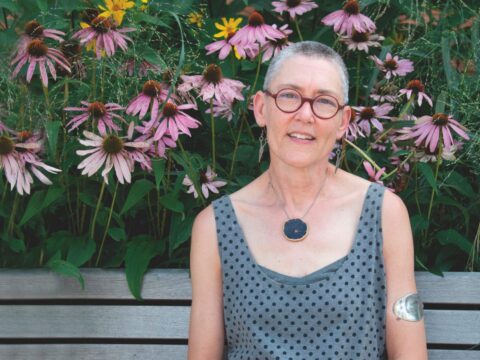The most important ministry takes place in the interruptions. That’s what I was taught in theological school. What my professors meant is that the unexpected knock on the church office door or conversation in the grocery store may turn into a life-saving mental health referral or critical pastoral visit. It is sage advice. And though it was never meant to be applied to the mother of all interruptions — a global pandemic — a year into the outbreak of COVID-19, it feels the most salient.
Learning to live collectively in the moment isn’t easy for churches that meet in a sanctuary, which by definition is a haven from life’s tumult. Exiled from buildings, the church has managed the interruptions by making significant changes. Church leaders clamoured to livestream Sunday services, set up meetings on Zoom and offer virtual pastoral visits. The technological shift has had a massive impact on the way we are the church. It quickly resulted in new opportunities for evangelism and connection. But the changes also exacerbated the rural-urban divide and exposed gaps between the technological haves and have-nots.
You may unsubscribe from any of our newsletters at any time.
Some of the reverberations have not yet reached our collective awareness. Overnight and across the church, ministers like Rev. Bob Mercer, who serves Clarenville United in Newfoundland, became video producers, sound techs and screen stars. The impact of this abrupt change in job description may take longer to realize. In November, Mercer shared a photo on Facebook of his wife climbing a stepladder and posing their son’s iPad precariously on one of the rungs to record the weekly service. “Covid has taught us to be resilient and hit the ground running, using whatever is on hand to keep the Word of God alive. This photo should give you an idea of our ingenuity for God,” he wrote, then joked, “There’s nothing like preaching to a stepladder for six months to make you realize just how much you miss the people.”
More on Broadview:
- How well is the new United Church working?
- Michael Blair on where the United Church should go from here
- How COVID-19 is reshaping Sunday school
For some, the new tasks of ministry are stressful. The number of church employees accessing counselling services has held at 30 percent in 2020, but “the shift that we are observing,” says pension and benefits manager Kira Tarasevici, is “in the type of inquiries. Whereas workplace personal stress has always been top of the list, we are seeing a significant surge of members reporting anxiety.”
A candidate for ministry who wishes to remain anonymous says that virtual services made internships hard to find, and that the work of congregational ministry has changed so significantly due to COVID-19 that it may no longer be a fit for the candidate’s skills and interests. “Now I’m not sure if going into congregational ministry is the right thing for me. It’s great that virtual services have been able to reach out to so many people, but without the in-person fellowship, I feel that there is a lack of intimacy in getting to know people.” Online just isn’t the same. “Connections aren’t happening organically anymore. It’s all scheduled. I’ve had the best pastoral care sessions while peeling potatoes or painting trim, [not] when I’ve scheduled a meeting with someone.”
While many communities of faith turned to technology, COVID also instantly swept aside the often snail’s-pace way the church manages institutional change. Typically, radical changes to job descriptions are led by personnel committees, and sweeping changes to the way the church meets and worships grind their way through copious council meetings. But in a span of a few weeks, the church turned on a dime, refocusing and reprioritizing typical operations.
Old divides between the courts of the church melted away, giving the whole church a golden opportunity to be more united than ever. Congregations turned to the national church’s website and webinars to help interpret government changes in policy and protocols, and learn about the latest ways to gain financial relief. Moderator Rt. Rev. Richard Bott recorded services to help congregations cope. The United Church Foundation’s granting program Seeds of Hope, which doesn’t typically fund technological improvements, awarded about $90,000 to help congregations and ministries upgrade their tech capacity. Outreach organizations like the GO Project quickly developed programming, including online confirmation programs and live virtual Sunday school. The project’s minister, Alana Martin, says 201 communities of faith have downloaded a free curriculum sample.
The church’s walls have never been as fluid. Suddenly, we are a church without borders, which raises philosophical questions: Once we can gather in person, will online church still be as popular? If gatherings remain even partly virtual, will the concepts of membership and belonging change? Will worship services become a product to consume rather than something to collectively create? Will we get better at evangelism?
Jazzlyn (surname omitted to protect her medical privacy) is the newest member of St. George’s United in Comox Valley, B.C. In January 2019, she was released from hospital after spending several months recovering from surgical complications. Jazzlyn wondered if getting in touch with spirituality would help guide her, but became too physically unwell to go to a service. Then, because of COVID, worship went virtual. “All of a sudden, it didn’t matter that my health was terrible.…That’s how my journey here started,” she testified in a livestreamed service last November. Still, her longing to meet in person was palpable. “It’s still quite difficult because I haven’t had the opportunity to meet any of you yet, but I still feel that sense of community that I was hoping for. I still feel that I’m a part of something. I can’t wait until COVID ends so I can become more than just a name that people see or a face on a screen.”
While we wait for that ending, with the benefit of hindsight there are questions about whether, in the scramble to adapt, the denomination missed opportunities to be more vocal about the management of the pandemic itself. “An ideology appeared that was immediately adopted by virtually everyone that the virus can only be suppressed but not eliminated,” says Rev. Ian Kellogg, the minister at Mill Woods United in Edmonton. “I wish the church would advocate for governments to set the goal of elimination: tighten borders, ramp up smart and fast testing, massively resource contact tracing [and] supported isolation for those who require it.”

Kellogg also believes the denomination should be talking more about those who are struggling because of the crisis. “The initial lockdown exposed a lot of oppressive conditions for migrant workers, those who are homeless, incarcerated and housed in long-term care,” he says. “The church should be more vocal.”
Perhaps here, too, the church took a “less talk, more action” approach. A few months after the pandemic hit, church members donated over $285,000 for people around the world who were more vulnerable than ever because of COVID-19. (Full disclosure: I worked on the fundraising campaign.) The money provided food assistance, shelter, basic medicine, hygiene kits, personal protective equipment for front-line workers, health support for those who are immunocompromised, and psycho-social support and education. In their own communities, churches worked to ensure that those who are street-involved continued to receive three square meals a day, organized deliveries of groceries and medications, and set up systems to give emotional support online and over the phone. That the church stepped up when it was more hurting and uncertain than ever is heartening.
There is no doubt that the pandemic brought out the church’s creative best both online and off. We have no shortage of examples. Every Saturday at 7 p.m., St. Andrew’s United in Lacombe, Alta., rang its bell seven times to thank health-care workers. A group at St. James United in Waterdown, Ont., sewed over 3,000 masks, mailing them across the country. Hundreds of pale blue ribbons waved from a tree outside Glebe-St. James United in Ottawa, one for each person who has died from the pandemic in the city.
In real time, when COVID shut one liturgical door, churches opened others. When restrictions clamped down on singing, Rev. Kimberly Heath, a minister at Wall Street United in Brockville, Ont., asked an aerobics instructor to lead the congregation in socially distanced movement instead. “People love it because it is a lot like exercise. I can’t wait to sing again, but I hope we never go back to standing still. The congregation is pretty open to new things, but I can’t at all imagine this would have happened without COVID,” she says.
It’s also hard to imagine what shifts will stick after the virus is eradicated. Of course, all of the changes the church has made in the last year stemmed from wanting to be responsive to the Gospel in the moment. That just might prove to be the church’s future saving grace, whatever interruption comes knocking.
Rev. Trisha Elliott is a writer in Ottawa.
This story first appeared in Broadview’s March 2021 issue with the title “The church’s COVID year.”
















One group was forgotten, those who do not have access to “streaming”, Skype, or YouTube. This could be from lack of internet service, elderly who cannot (or will not) endeavor to use a computer, laptop or iPad, or those who cannot afford such luxuries. (Remember libraries are closed as well).
Here the old fashion phone, or pen and paper method can be a little stressful for those of us who view it passé, but it goes a long way when reaching out to those in the congregation who are often forgotten, though not intentionally.